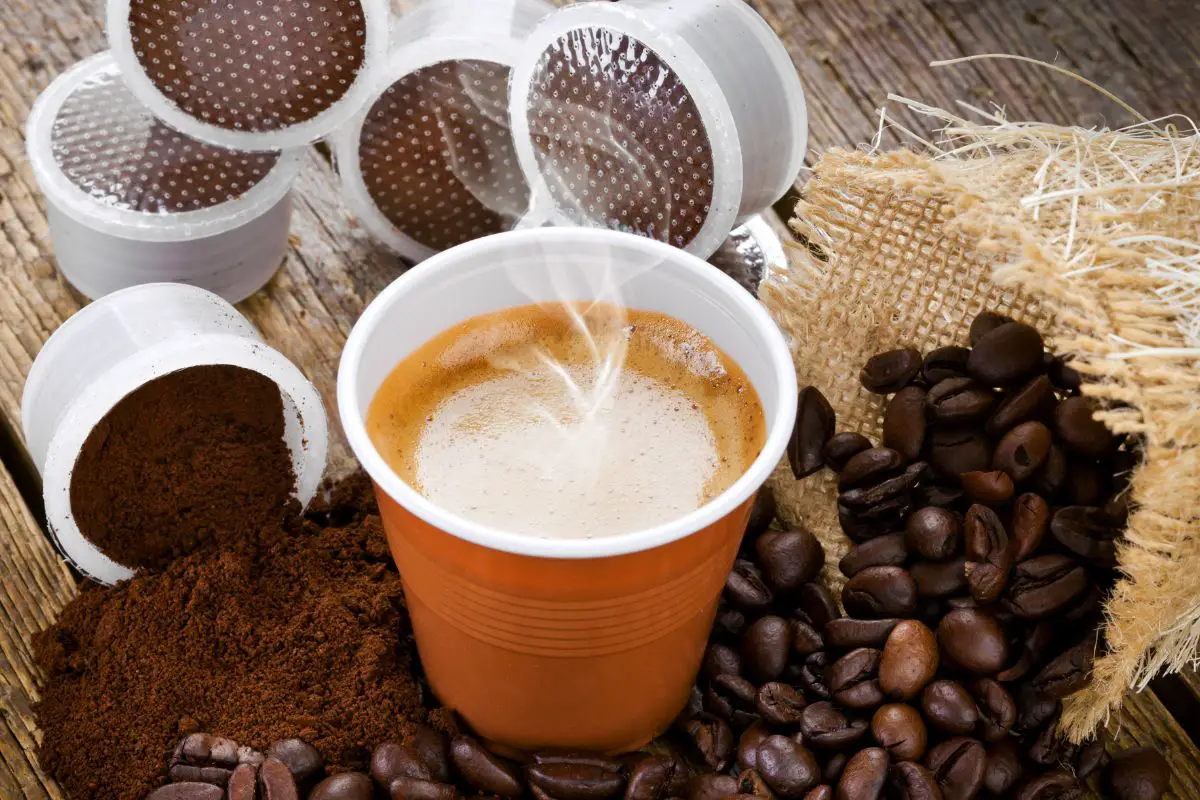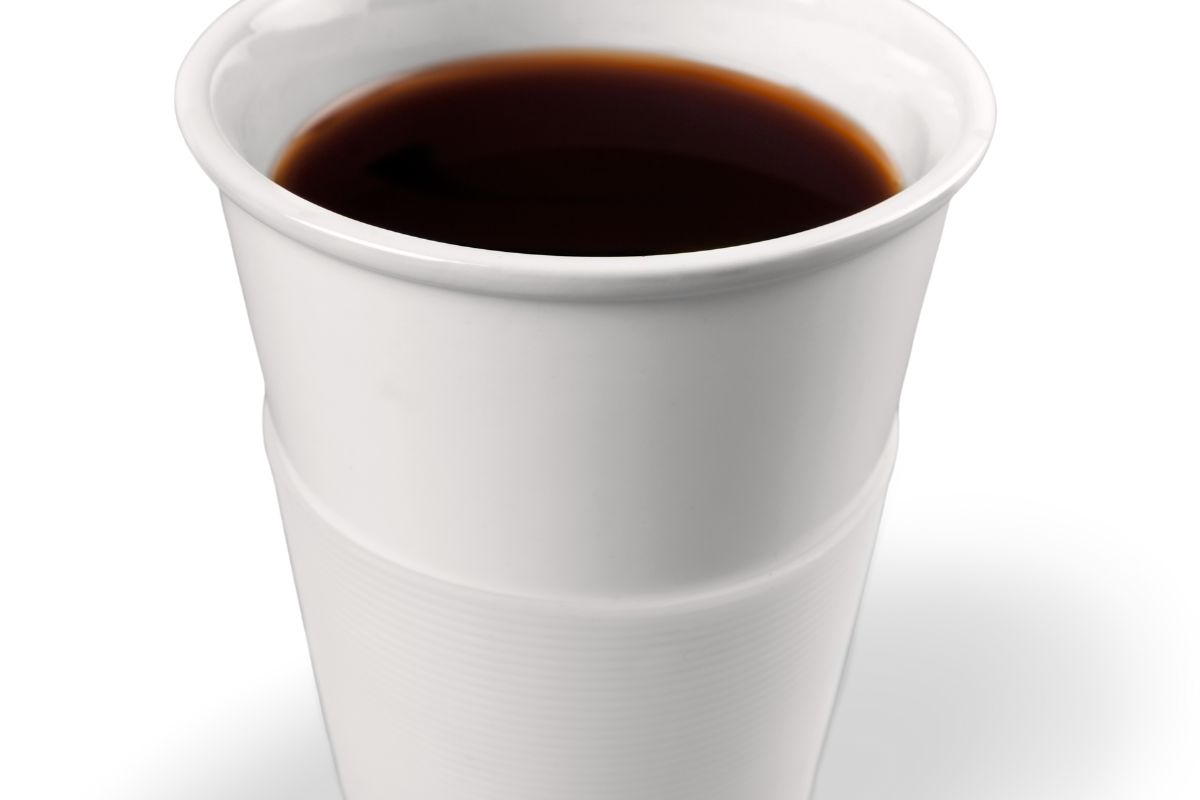Can you put hot coffee in a plastic cup? The answer may seem obvious to some, but it is a question that deserves careful consideration.

In a world where convenience often trumps safety, it is important to understand the implications of using plastic cups for hot beverages. Plastic cups, typically made from polyethylene or polystyrene, are not designed to withstand high temperatures. The heat from hot coffee can cause the plastic to melt, potentially releasing harmful chemicals into your drink.
However, not all plastic cups are created equal. Some are made from heat-resistant materials and are labeled as such. These cups are generally safer to use with hot liquids. Additionally, looking for cups that are BPA-free can further reduce the risk of chemical leaching.
If you are concerned about the safety of using plastic cups, there are alternatives such as insulating sleeves or paper cups that can provide a safer option. It is important to make an informed decision based on safety and convenience factors when choosing the appropriate container for your hot coffee.
Key Takeaways
- Plastic cups are not designed to withstand high temperatures and can melt when hot coffee is poured into them
- BPA-free plastic cups reduce the risk of chemical leaching
- Insulating sleeves or paper cups can provide a safer alternative to using plastic cups for hot beverages
- Consider alternative options like ceramic or stainless steel cups for superior heat resistance
Understand the Composition of Plastic Cups
The composition of plastic cups determines their ability to withstand high temperatures and potential reactions with hot substances.
Plastic cups are typically made from a variety of polymers, such as polypropylene or polystyrene. These polymers are chosen for their durability, flexibility, and cost-effectiveness. However, not all plastic cups are suitable for holding hot coffee.
Polypropylene is a commonly used material in the production of plastic cups. It has a high melting point of around 160 degrees Celsius, making it suitable for holding hot liquids. This material is also resistant to chemical reactions, ensuring that it does not interact with the coffee and compromise its taste or safety.
On the other hand, polystyrene cups have a lower melting point of around 100 degrees Celsius and may not be able to withstand the high temperatures of hot coffee.
When considering the temperature of the coffee, it is important to choose a plastic cup that can handle the heat. Using a cup made from a suitable material, such as polypropylene, ensures that the cup will not deform or release harmful chemicals into the beverage. Therefore, it is crucial to carefully assess the composition of the plastic cup before pouring hot coffee into it, to ensure both the cup’s functionality and the safety of the consumer.
Consider the Temperature of the Coffee
Considering the potential damage caused by high temperature, it is prudent to ascertain whether a plastic receptacle possesses the requisite heat resistance before entrusting it with the task of holding one’s favorite morning beverage.
Plastic cups are made from a variety of materials, such as polypropylene, polystyrene, and polycarbonate, each with its own heat resistance properties. Polypropylene is commonly used for disposable cups and has a lower heat resistance compared to polystyrene and polycarbonate, which are more durable and heat-resistant. However, even cups made from these materials have limitations when it comes to hot liquids.
When hot coffee is poured into a plastic cup, the high temperature can cause the cup to deform, melt, or release harmful chemicals into the beverage. Polypropylene cups, for example, may start to soften at temperatures above 160°F (71°C), potentially leading to deformation or even leakage. Polystyrene cups can withstand slightly higher temperatures, but they may still deform or release chemicals if the temperature exceeds their limits. Polycarbonate cups, on the other hand, are more heat-resistant and can typically handle temperatures up to 212°F (100°C) without significant deformation or chemical release.
To ensure safety, it is essential to assess the quality of the plastic cup and its heat resistance capabilities before using it for hot coffee. This can be done by checking the cup’s specifications or consulting the manufacturer’s guidelines. By taking these precautions, one can enjoy their hot coffee without compromising their health or risking any potential hazards associated with using an unsuitable plastic cup.
Assess the Quality of the Plastic Cup

To ensure a safe and satisfying experience, it is imperative to carefully evaluate the plastic cup’s quality and its ability to withstand high temperatures. A plastic cup made of low-quality material may pose several risks when filled with hot coffee.
Here are two factors to consider when assessing the quality of a plastic cup:
- Material Composition:
- Look for cups made from high-quality, food-grade plastics such as polypropylene or polyethylene terephthalate (PET). These materials are known for their durability and ability to withstand high temperatures without leaching harmful chemicals into the coffee.
- Avoid cups made from polystyrene (PS) or polyvinyl chloride (PVC) as they tend to melt or release toxic substances when exposed to hot liquids.
- Structural Integrity:
- Examine the cup for any signs of weakness or deformities. A sturdy plastic cup should have a well-constructed design that can withstand the weight of hot coffee without bending or warping.
- Check for a reliable lid and a secure sealing mechanism to prevent any accidental spills or leaks.
By carefully assessing the quality of the plastic cup, one can ensure a safe and enjoyable experience when using it to hold hot coffee. Transitioning to the subsequent section, it is also essential to look for BPA-free and heat-resistant cups to further enhance the safety and functionality of the coffee-drinking experience.
Look for BPA-Free and Heat-Resistant Cups
When searching for a suitable plastic cup, it is crucial to prioritize cups that are both BPA-free and resistant to high temperatures, ensuring a safe and reliable choice for enjoying a hot beverage.
BPA, or bisphenol A, is a chemical often used in the production of plastics and has been found to have potential health risks. By selecting a BPA-free cup, individuals can avoid exposure to this chemical and reduce the associated health concerns.
Additionally, heat resistance is an essential characteristic to consider when choosing a plastic cup for hot beverages. Cups that are not heat-resistant can melt or deform when exposed to high temperatures, potentially releasing harmful chemicals into the drink. Therefore, it is important to opt for cups that are specifically designed to withstand hot liquids without compromising their structure or releasing toxic substances.
Considering the safety of using plastic cups with hot drinks, it is recommended to use insulating sleeves or paper cups as alternatives. These options provide an additional layer of protection, minimizing the direct contact between the hot liquid and the plastic cup. Insulating sleeves act as a barrier, reducing heat transfer and preventing the cup from becoming too hot to handle. Paper cups, on the other hand, are naturally heat-resistant and can withstand high temperatures without melting or deforming. By using these alternatives, individuals can further enhance the safety and enjoyment of their hot beverages while using plastic cups.
Use Insulating Sleeves or Paper Cups as Alternatives
Insulating sleeves and paper cups offer an additional layer of protection, ensuring a safer and more enjoyable experience when consuming hot beverages.
Insulating sleeves, commonly made from materials such as neoprene or silicone, are designed to fit around plastic cups and provide thermal insulation. This helps to keep the heat inside the cup and prevents it from transferring to your hands, reducing the risk of burns or discomfort.
Paper cups, on the other hand, are often lined with materials such as polyethylene, which acts as a barrier against heat. Additionally, paper cups are usually thicker than plastic cups, further enhancing their ability to withstand high temperatures.
When considering safety, it is important to note that insulating sleeves and paper cups have their limitations. While they can provide some protection, they may not completely eliminate the risk of burns if the beverage is extremely hot or if the cup is held for an extended period.
Therefore, it is crucial to make an informed decision based on safety and convenience factors. This involves considering alternative options such as ceramic or stainless steel cups, which are known for their superior heat resistance.
By weighing the pros and cons of each choice, individuals can ensure a safe and enjoyable hot beverage experience.
Make an Informed Decision Based on Safety and Convenience Factors

An informed decision regarding the choice of beverage container involves considering factors such as safety and convenience, but how can one ensure both aspects are met? When it comes to putting hot coffee in a plastic cup, it is crucial to evaluate the safety and convenience factors associated with this practice.
Safety should be the primary concern when using any type of container for hot beverages. Plastic cups may not be the ideal choice for hot coffee due to their potential to release harmful chemicals when exposed to heat. Bisphenol A (BPA), a common chemical used in some plastics, can leach into hot liquids and pose health risks. To ensure safety, it is recommended to use containers made from materials specifically designed for hot beverages, such as ceramic or stainless steel.
Convenience is another important factor to consider. While plastic cups are lightweight and easily disposable, they may not provide adequate insulation to keep the coffee hot for an extended period. Insulating sleeves or paper cups can be used as alternatives to maintain the temperature of the beverage.
To provide a visual representation of the safety and convenience factors, a table can be used to compare different types of beverage containers. This table can include columns for material, safety rating, insulation capabilities, and convenience features. By consulting such a table, individuals can make an informed decision based on their priorities and desires for safety.
Frequently Asked Questions
How long can hot coffee be kept in a plastic cup before it starts affecting the taste?
Hot coffee can be kept in a plastic cup for a limited time before its taste is affected. The duration depends on various factors such as the type of plastic, temperature, and duration of exposure, but it is generally recommended to transfer hot coffee to a more suitable container to maintain taste and safety.
Can plastic cups release any harmful chemicals into the hot coffee?
Plastic cups can release harmful chemicals into hot coffee, such as bisphenol A (BPA) and phthalates, which can leach from the cup’s material. It is recommended to use heat-resistant and BPA-free cups to minimize health risks.
How do I know if a plastic cup is BPA-free?
To determine if a plastic cup is BPA-free, one should look for labeling that explicitly states “BPA-free” or “free of bisphenol A.” Additionally, checking the recycling symbol for the number 7 may indicate the presence of BPA.
Are all plastic cups heat-resistant?
Not all plastic cups are heat-resistant. The heat resistance of a plastic cup depends on the type of plastic used. It is important to check the manufacturer’s guidelines before putting hot liquids in a plastic cup to ensure safety.
Can I reheat my coffee in a plastic cup in the microwave?
Reheating coffee in a plastic cup in the microwave can be risky. Plastic cups vary in their heat resistance, and some may release harmful chemicals when exposed to high temperatures. It is advisable to use microwave-safe containers for reheating beverages.
Conclusion
In conclusion, it is possible to put hot coffee in a plastic cup, but several factors need to be considered. The composition of the plastic cup, the temperature of the coffee, and the quality of the cup are important factors to ensure safety. Look for BPA-free and heat-resistant cups to minimize potential health risks.
Interestingly, a study found that approximately 8 million metric tons of plastic enter the ocean each year, causing harm to marine life and ecosystems. This statistic highlights the importance of choosing environmentally-friendly alternatives to plastic cups.
Also read:
Can You Put Coffee In A Flask?